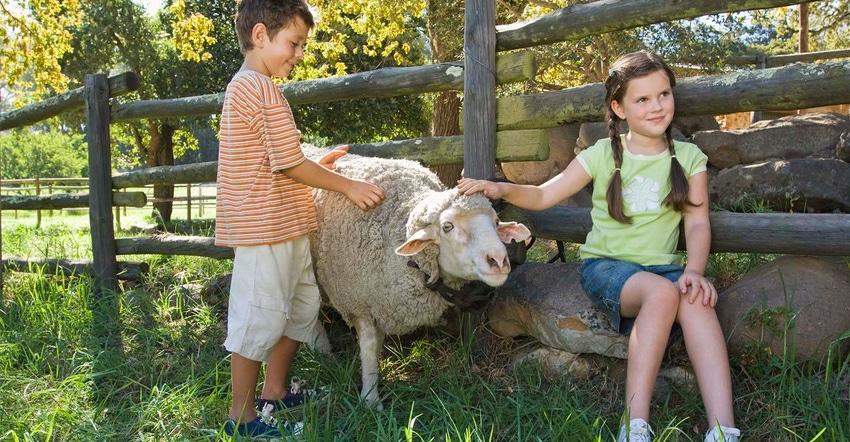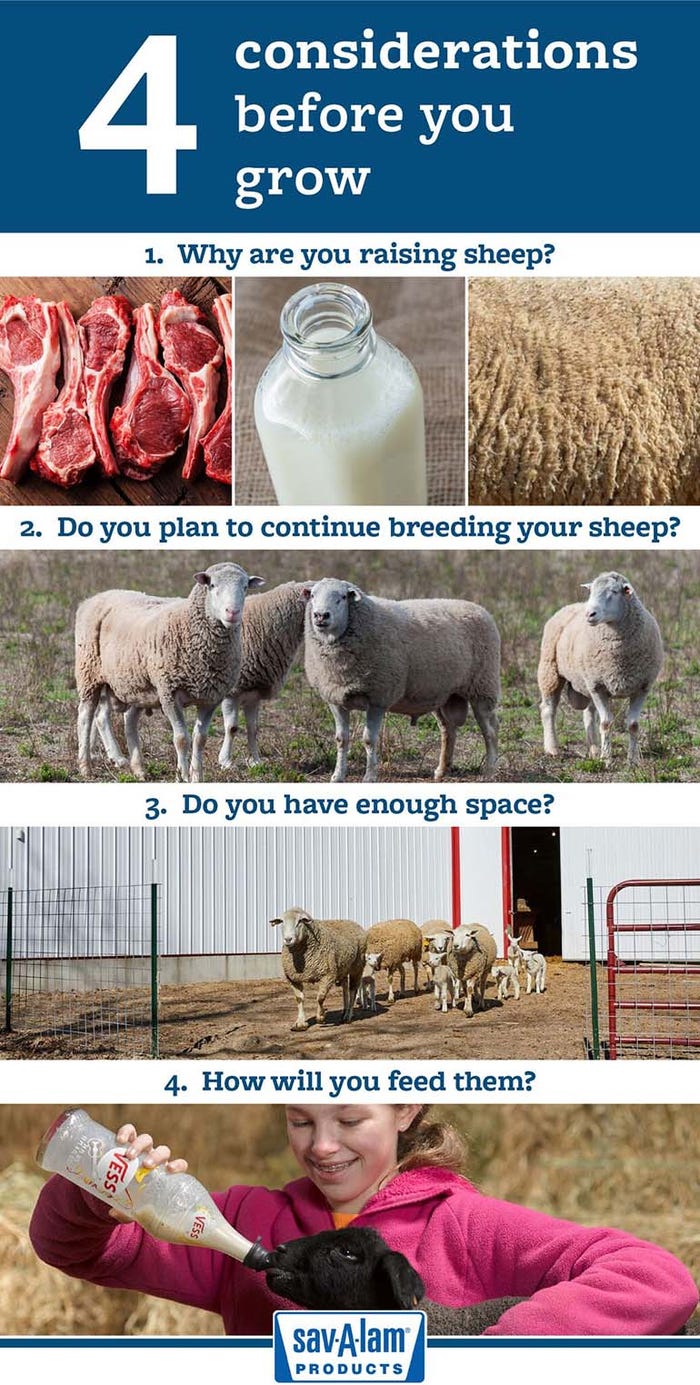August 17, 2017

Are you thinking about expanding your sheep flock? Whether you plan to grow by breeding your ewes this fall or buying lambs next spring, adding more sheep to your farm can be exciting and fun. Preparation is key to being successful.
“Whether you’re an experienced sheep raiser or new to having a flock, take time to research and plan before making your decision,” says Julian (Skip) Olson, DVM, technical services manager for Milk Products.
Here are four areas to consider before expanding your flock:
1. Why are you raising sheep?
Sheep breed and age should both play a factor in your expansion decision.
“Before you decide which breed is best for you, think about what you’d like to do with your sheep,” says Olson. “Do you want to use their wool? Are you hoping for meat or milk? Do you plan to breed them? Or are you expanding to add more fun to your farm?”
Sheep breeds generally fall into three general categories: wool, meat and dairy. Many breeds are dual-purpose, while some breeds can fall into all categories. For wool consider Merino, Lincoln, Rambouillet or Romney. Popular meat breeds include Suffolk, Hampshire, Dorset and Southdown, while East Friesian and Lacaune are well-known for dairy production. If you’re looking for a dual-purpose breed – a breed valued for wool and meat production – a Columbia, Corriedale or Polypay may be the breed for you.
“Choose a breed that best fits into your lifestyle. Consider the use, cost and management of each. For instance, a dairy breed will require consistent milking, while you’ll need a plan for the wool and meat of other breeds,” says Olson. “Seek advice from local sheep breeders – it can be helpful to know why they chose their specific breed.”
Once you’ve selected a sheep breed, decide which age is best for you. Are you interested in raising lambs or would you rather have adult sheep? Whichever age you decide, make sure it fits your lifestyle. Lambs are typically born in early spring, and available at that time. Pregnant ewes can often be purchased in the fall so they can become accustomed to your farm before lambing.
2. Do you plan to continue breeding your sheep?
If you plan to breed sheep, you may consider adding a ram. If breeding isn’t your goal, however, it is best to keep only ewes and wethers (castrated males). Rams can be aggressive and require additional nutrition and care during the breeding season. You’ll also need a separate housing facility if you choose to own a ram manage mating.
“If you decide to have a ram, be sure to have an experienced sheep owner help guide you along your journey,” says Olson. “Rams can be dangerous to inexperienced sheep owners and should be handled with caution.”
3. Do you have enough space?
How much space you have available will be a driving factor in your flock size.
“Sheep are social animals and ruminants, so plan to meet both their social and nutritional needs with your space,” says Olson. “Your sheep will be happiest grazing on pasture and with at least one other sheep.”
A general rule is four sheep per acre, but this can vary greatly depending on the pasture type, rainfall and sheep size. Pastures can include a mixture of grasses, legumes, brush and trees. It’s a good idea to be familiar with what’s in your pasture; sheep will typically avoid poisonous plants, but proactive planning can prevent problems.
“Inclement weather and predators can both cause a threat to your flock,” says Olson. “Make sure to have enough shelter to keep them safe.”
A simple, south-facing, three-sided shed is often enough to protect them from the elements and predators. They should each have 15 to 20 square feet of indoor space. Build a permanent fence around the shelter and consider a moveable fence so you can rotate grazing areas.
4. How will you feed them?
Health and nutrition will be key factors in keeping a happy flock. If you’re raising lambs, start them on a lamb-specific colostrum replacer. Then transition to a lamb milk replacer on day two through weaning. After you transition them to a starter feed, introduce them to forage or pasture.
“Besides forage your sheep will need supplemental feed to complete their diet,” says Olson. “Sheep supplements include minerals, vitamins and other components your sheep would miss if they were only consuming forage.”
Your flock’s ration should contain protein, fat, fiber, minerals, roughage, concentrates and water. Make sure to select a feed formulated specifically for sheep as they can’t tolerate much copper in their diets.

Source: Milk Products
You May Also Like




